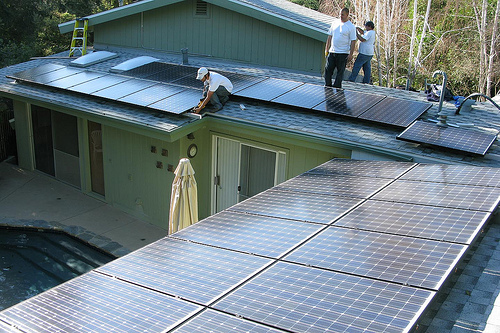Energy Future Holdings $1 Billion Bonding for Texas Mines Doesn’t Pass the Smell Test
An exclusive report from Public Citizen and Sierra Club reveals that Energy Future Holdings (EFH) and its subsidiaries have not set aside cash or real assets to cover the $1.01 billion cost of cleaning up its strip mines in Texas. Click here to get a copy of the full report entitled “Energy Future Holdings and Mining Reclamation Bonds in Texas“.
As a result, taxpayers could end up with the bill if mines are abandoned by EFH, which is expected to file for bankruptcy by year’s end.
“The report shows that Energy Future Holdings has been playing fast and loose with its obligations to Texans,” said Tom “Smitty” Smith, director of Public Citizen’s Texas office. “The law is clear, and Texas regulators should take immediate action to demand a cash bond so taxpayers and the environment are protected.”
The Public Citizen and Sierra Club report, titled “Energy Future Holdings and Mining Reclamation Bonds in Texas,” was authored by Tom Sanzillo, Director of Finance for the Institute for Energy Economics and Financial Analysis. (Sanzillo previously served as first deputy comptroller of New York State and has thirty years of experience in public and private finance.)
Under federal law, mining companies are required to set aside money for clean-up of mines so resources will be available even if the mines are abandoned. The law was created because many mines were abandoned across the United States when companies went bankrupt, leading to contamination of surface water and groundwater.
In Texas, EFH’s subsidiary, Luminant Mining, is responsible for the operation and clean-up of its eleven active strip mines. The reclamation is estimated to cost as much as $1.01 billion.
In many states, Luminant Mining would be required to put up a $1.01 billion cash bond or other financial assets equal to that amount. But Texas’s Railroad Commission, which administers state mining law, has allowed Luminant to “self-bond,” which means it is relying on a “guarantee” without having real cash bonds set aside that the state can readily access.
Sanzillo’s analysis shows that the Luminant Generation assets that are used to pass the Railroad Commission’s financial tests for the $1.01 billion “self-bond” are already committed to secure other debt incurred by EFH.
“Luminant Generation’s revenue-generating assets, its power plants, are pledged as security for Energy Future Holdings debt,” said Sanzillo. “That means there may not be liquid assets available for the cost of reclamation. The fundamental problem is that there does not appear to be any unencumbered capital obligated to the state.” Sanzillo added, “EFH has been playing a shell-game, and state regulators have allowed it, Sanzillo said. “If EFH is just now trying to come up with money for reclamation, that confirms it wasn’t there before. Any new financing mechanism that EFH comes up with must be reviewed rigorously. EFH has to segregate the money – set cash aside or post a third-party bond specifically for clean-up of the mines.”
Al Armendariz, senior representative in Texas for Sierra Club’s Beyond Coal Campaign, said, “This billion-dollar bonding should be a wake-up call for future buyers of EFH’s oldest coal plants. It may be that these old EFH coal plants are just too expensive to operate. They’re the subject of enforcement actions by the U.S. Justice Department, and EFH may be required to add hundreds of millions of dollars in additional pollution controls to meet new ozone, mercury, and carbon standards.”
Smith pointed out that how Texas handles the EFH financing for clean-up of mines could set national precedent.
“One hundred and fifty coal generating units in the United States have announced they plan to retire, and as a result many of the mines that supply them may end up in financial trouble,” Smith said. “This problem is bigger than Texas and regulators across the nation should take steps to protect consumers and the environment in their states.”
Read Full Post »




